Pink Toe Tarantula
- March 14, 2024
- 0 comment
The Pink Toe Tarantula, scientifically known as Avicularia avicularia, is a captivating arachnid species native to the lush rainforests of South America, particularly found in regions like Guyana, Suriname, French Guiana, and Brazil. As its name suggests, this tarantula species boasts distinctive pinkish-colored toes that contrast strikingly with its dark-colored body. With a body structure characterized by eight legs and two prominent pedipalps near its mouth, the Pink Toe Tarantula exhibits a compact yet elegant appearance.
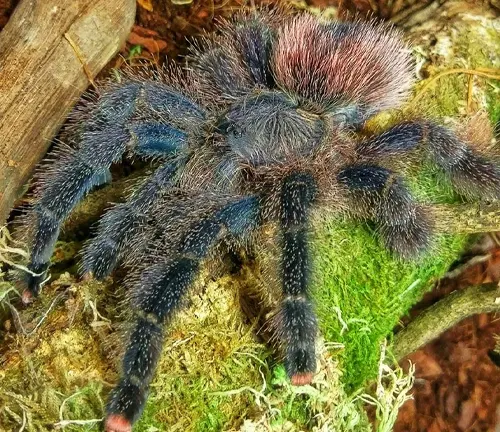
These arboreal creatures prefer to inhabit trees and shrubs, utilizing their silk to create intricate webs for shelter and hunting. Despite their fearsome appearance, Pink Toe Tarantulas are generally docile and shy, often retreating rather than confronting threats. Their diet consists mainly of insects like crickets and roaches, which they catch in their webs. Pink Toe Tarantulas undergo several molts before reaching maturity, a process that can take several years. Although they possess venom, it’s relatively mild and poses little threat to humans. With proper care and attention to their environmental needs, Pink Toe Tarantulas can thrive as fascinating pets for enthusiasts willing to appreciate their unique beauty and behavior.
| Specification | Description |
|---|---|
| Scientific Name | Avicularia avicularia |
| Common Name | Pink Toe Tarantula |
| Native Habitat | South American rainforests (Guyana, Suriname, etc.) |
| Body Structure | Compact with eight legs and prominent pedipalps |
| Coloration | Dark-colored body with distinctive pinkish toes |
| Habitat Preference | Arboreal, found in trees and shrubs |
| Behavior | Generally docile and shy, preferring to retreat |
| Diet | Insectivorous, feeding on insects like crickets |
| Reproduction | Mating ritual followed by egg laying and incubation |
| Venom | Relatively mild, posing little threat to humans |
| Lifespan | Several years, with proper care and environment |
| Conservation Status | Not endangered, but habitat loss is a concern |
A Beginner’s Guide
Tarantulas are fascinating creatures that often evoke a mix of curiosity and fear in people. Among the diverse species of tarantulas, the Pink Toe Tarantula (Avicularia avicularia) stands out for its striking appearance and intriguing behaviors. In this article, we’ll delve into the world of Pink Toe Tarantulas, exploring their characteristics, habitat, care requirements, and more.
The Pink Toe Tarantula, also known as the Guyana Pink Toe or Common Pink Toe, is a species native to South America, primarily found in regions like Guyana, Suriname, French Guiana, and Brazil. It belongs to the Aviculariinae subfamily of the Theraphosidae family.
Physical Characteristics
Body Structure
The Pink Toe Tarantula possesses a compact body structure characterized by eight legs and two prominent pedipalps near its mouth. These pedipalps are used for handling prey and other tasks. With a total of ten appendages, Pink Toe Tarantulas exhibit remarkable agility and dexterity, essential for navigating their arboreal habitat. Their bodies are covered in fine, velvety hair, adding to their distinctive appearance and providing sensory input. This body structure enables Pink Toe Tarantulas to climb, hunt, and interact with their environment effectively.
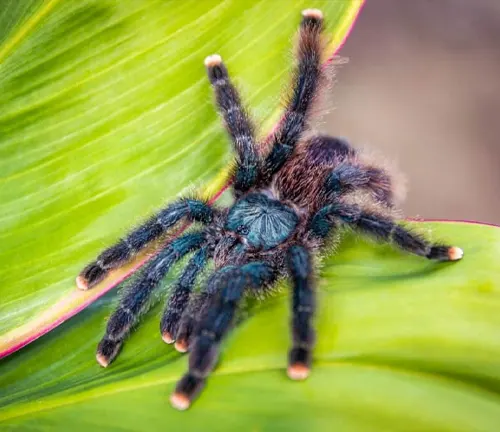
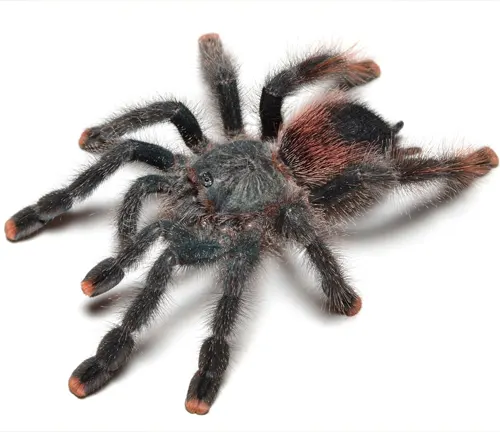
Coloration
The Pink Toe Tarantula derives its name from the distinctive pinkish coloration on its toes, which contrasts beautifully with the darker hues of its body. While the overall coloration of Pink Toe Tarantulas can vary depending on factors such as age, species, and individual genetics, they typically exhibit shades of brown to black on their bodies. Additionally, some species may display iridescent or metallic sheens, adding to their visual allure. This variation in coloration serves various purposes, including camouflage, communication, and thermoregulation, allowing Pink Toe Tarantulas to thrive in their natural habitats.
Habitat and Distribution


Pink Toe Tarantulas are primarily found in the lush rainforests and tropical regions of South America, including countries like Guyana, Suriname, French Guiana, and Brazil. These arboreal creatures prefer to inhabit trees and shrubs, where they can find ample shelter and hunting opportunities. Within their natural habitat, Pink Toe Tarantulas utilize their silk to construct intricate webs for resting and catching prey. Their preference for arboreal environments reflects their adaptation to life among foliage, where they can blend in with their surroundings and avoid ground-dwelling predators.
The distribution of Pink Toe Tarantulas varies within their range, with some species exhibiting localized populations while others are more widely distributed. Factors such as habitat destruction, climate change, and human activity can impact the distribution and abundance of Pink Toe Tarantulas in their native regions. Despite these challenges, Pink Toe Tarantulas have managed to adapt to a diverse range of habitats within their range, showcasing their resilience and ability to thrive in the face of environmental pressures.
Behavior and Temperament


Pink Toe Tarantulas are known for their generally docile and shy temperament, making them popular choices among tarantula enthusiasts. Unlike some other tarantula species known for aggression, Pink Toe Tarantulas prefer to retreat rather than confront threats. When feeling threatened, they may exhibit defensive behaviors such as raising their front legs or flicking urticating hairs from their abdomen as a deterrent. However, they are more likely to flee and seek shelter in their arboreal habitat rather than engage in confrontation.
In captivity, Pink Toe Tarantulas can become accustomed to their owners’ presence and may even tolerate gentle handling, although care should be taken to avoid stressing or injuring the spider. Despite their calm demeanor, Pink Toe Tarantulas are still wild animals and should be treated with respect and caution. Providing them with a secure and enriched environment that mimics their natural habitat can help promote their well-being and reduce stress. Understanding their behavior and respecting their boundaries is essential for fostering a positive relationship with these fascinating creatures.
Feeding Habits
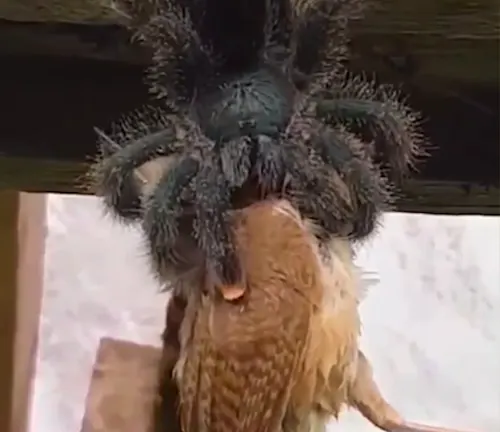
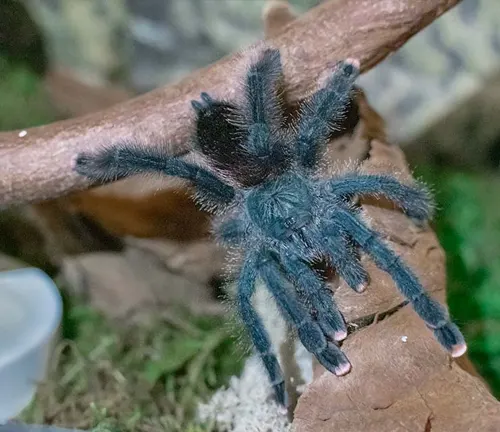
Pink Toe Tarantulas are carnivorous predators, feeding primarily on insects and other small arthropods in the wild. In captivity, they are commonly fed a diet of live prey, including crickets, roaches, mealworms, and other appropriately sized insects.
Pink Toe Tarantulas use their silk to create webs in their arboreal habitat, where they can catch and immobilize prey. They are adept hunters, relying on their keen senses to detect vibrations and movements of potential prey nearby. Once prey is captured in their web, Pink Toe Tarantulas will approach cautiously before delivering a venomous bite to immobilize it.
It’s essential for owners to provide a varied and balanced diet for their Pink Toe Tarantulas to ensure optimal health and nutrition. Additionally, offering live prey stimulates natural hunting behaviors and provides enrichment for these fascinating creatures. Care should be taken not to overfeed Pink Toe Tarantulas, as obesity can lead to health issues such as molting difficulties and decreased lifespan. Providing appropriately sized prey items and monitoring feeding frequency are essential aspects of caring for Pink Toe Tarantulas.
Reproduction and Lifecycle

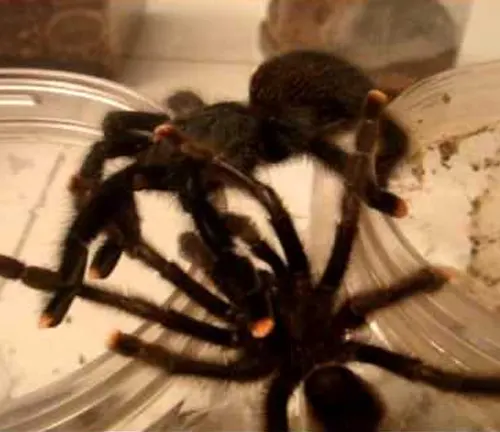
The reproduction of Pink Toe Tarantulas follows a fascinating process that begins with courtship rituals performed by the male to attract a female mate. During courtship, the male may engage in intricate displays, including drumming on the substrate or vibrating its body, to signal its intentions to the female. If successful, the male approaches the female cautiously, often tapping her legs or abdomen to initiate mating.
Once mating is complete, the female Pink Toe Tarantula stores the sperm in specialized receptacles until she is ready to fertilize her eggs. She then constructs an egg sac using silk, where she deposits her fertilized eggs and guards them diligently until they hatch. The incubation period varies depending on factors such as temperature and humidity, but typically ranges from several weeks to a few months.
After hatching, the spiderlings emerge from the egg sac and undergo several molts as they grow and develop. During this time, they rely on their mother for protection and guidance, often remaining close to her until they are ready to venture out on their own. As they mature, Pink Toe Tarantulas continue to molt periodically, shedding their exoskeletons to accommodate their increasing size.
The lifecycle of a Pink Toe Tarantula can span several years, with females generally living longer than males. Proper care and environmental conditions are essential throughout each stage of their lifecycle to ensure their health and well-being. By understanding the reproductive and developmental processes of Pink Toe Tarantulas, enthusiasts can gain a deeper appreciation for these remarkable creatures.
Common Health Issues
While Pink Toe Tarantulas are generally hardy creatures when provided with proper care, they can still experience health issues under certain circumstances. Some common health issues that Pink Toe Tarantula owners may encounter include:
- Dehydration: Pink Toe Tarantulas require a moderately humid environment to thrive. If humidity levels in their enclosure are too low, they may become dehydrated, leading to health problems such as lethargy, difficulty molting, and dehydration-related issues.
- Injuries from Falls: As arboreal species, Pink Toe Tarantulas are adapted to climbing and navigating trees and shrubs. However, falls from heights within their enclosure can result in injuries such as broken limbs or ruptured abdomens. Providing adequate climbing structures and ensuring a secure enclosure can help prevent falls and injuries.
- Molting Problems: Molting is a natural process for tarantulas, during which they shed their old exoskeleton to accommodate growth. However, molting problems can occur if environmental conditions are not optimal or if the tarantula is stressed. Molting issues can manifest as incomplete molts, stuck exoskeletons, or difficulty shedding, which can be potentially life-threatening if not addressed promptly.
- Parasitic Infections: Pink Toe Tarantulas can be susceptible to parasitic infections caused by internal parasites such as mites or nematodes. These parasites can negatively impact the tarantula’s health, leading to symptoms such as lethargy, loss of appetite, and abnormal behavior. Regular monitoring of the tarantula’s appearance and behavior can help detect and address parasitic infections early.
- Overfeeding: Overfeeding can lead to obesity and related health issues in Pink Toe Tarantulas. Offering prey items that are too large or feeding too frequently can result in weight gain and digestive problems. Maintaining a balanced diet and monitoring feeding frequency are essential to prevent overfeeding-related health issues.
Handling and Care
Handling Pink Toe Tarantulas can be a rewarding experience for enthusiasts, but it’s essential to approach it with caution and respect for the spider’s well-being. Here are some guidelines for handling and caring for Pink Toe Tarantulas:
- Approach with Caution: When handling Pink Toe Tarantulas, it’s crucial to approach them calmly and gently. Avoid sudden movements or loud noises that could startle the spider, as this may cause stress or defensive behavior.
- Use a Gentle Touch: When picking up a Pink Toe Tarantula, use a soft brush or your hands to gently coax it onto your palm. Avoid grasping the spider too firmly or pinching its legs, as this can cause injury or stress.
- Support the Body: Support the Pink Toe Tarantula’s body evenly with your hand to prevent it from falling or feeling insecure. Be mindful of its delicate limbs and abdomen, ensuring that they are properly supported during handling.
- Avoid Handling During Molting: It’s essential to avoid handling Pink Toe Tarantulas during the molting process, as they are particularly vulnerable at this time. Disturbing a tarantula during molting can lead to complications and potential injuries.
- Wash Hands Before and After: Before and after handling Pink Toe Tarantulas, it’s essential to wash your hands thoroughly with mild soap and water. This helps prevent the transfer of harmful bacteria or chemicals to the spider and reduces the risk of contamination.
- Monitor Behavior: Pay attention to the Pink Toe Tarantula’s behavior during handling. If it displays signs of stress or agitation, such as raising its front legs or vibrating its body, gently return it to its enclosure and give it time to calm down.
- Provide Proper Enclosure: Ensure that the Pink Toe Tarantula’s enclosure is appropriately set up with suitable substrate, climbing structures, and hiding spots. Maintain optimal temperature and humidity levels to promote the spider’s health and well-being.
- Respect Boundaries: While Pink Toe Tarantulas can be handled, it’s essential to respect their boundaries and preferences. Not all individuals enjoy handling, and forcing the spider to interact with you can cause stress or defensive behavior.
Suitable Enclosure Setup
Creating a suitable enclosure for Pink Toe Tarantulas is crucial for their health and well-being. Here are some key components to consider when setting up their habitat:
- Enclosure Size: Choose an enclosure that provides ample space for the Pink Toe Tarantula to move around comfortably. For adult tarantulas, a tank with dimensions of at least 12x12x12 inches (30x30x30 cm) is recommended, although larger enclosures are preferable for more active species.
- Substrate: Use a substrate that mimics the Pink Toe Tarantula’s natural environment, such as coconut fiber or peat moss. The substrate should be deep enough to allow the tarantula to burrow if desired and should hold moisture well to maintain humidity levels.
- Climbing Structures: Pink Toe Tarantulas are arboreal species and require plenty of vertical space to climb and explore. Provide branches, vines, or cork bark tubes for climbing, along with anchor points for web-building.
- Hiding Places: Include hiding spots such as cork bark hides or half-buried flower pots to provide security and shelter for the Pink Toe Tarantula. These hiding places should be placed strategically throughout the enclosure to allow the tarantula to retreat and feel safe.
- Humidity and Ventilation: Maintain proper humidity levels (around 70-80%) within the enclosure by misting the substrate and providing a water dish. Ensure adequate ventilation to prevent stagnant air and mold growth while maintaining humidity.
- Temperature Gradient: Pink Toe Tarantulas prefer temperatures ranging from 75°F to 85°F (24°C to 29°C). Use a combination of ambient room temperature and a heat source such as a heat mat or ceramic heat emitter to create a temperature gradient within the enclosure.
- Lighting: Pink Toe Tarantulas are nocturnal creatures and do not require special lighting. Ambient room lighting is usually sufficient, although providing a low-level light source can help simulate natural day-night cycles.
- Cleaning and Maintenance: Regularly clean and spot-clean the enclosure to remove uneaten prey, feces, and shed exoskeletons. Replace the substrate every few months or as needed to maintain cleanliness and prevent mold or bacterial growth.
Interactions with Humans
Pink Toe Tarantulas can elicit a range of reactions from humans, from fascination to fear. Understanding how to interact with these creatures safely and respectfully is essential for both the tarantula’s well-being and the human’s comfort.
- Observation: Observing Pink Toe Tarantulas from a safe distance is often the best way to appreciate their beauty and behavior. Many tarantula enthusiasts enjoy watching their pets explore their enclosures, hunt for prey, and molt.
- Handling: While Pink Toe Tarantulas can be handled, it’s crucial to do so with care and caution. Handling should only be attempted by individuals who are experienced and comfortable with tarantulas. Always approach the tarantula calmly and gently, and support its body evenly to prevent falls or injuries.
- Respect Boundaries: Not all Pink Toe Tarantulas enjoy handling or interaction with humans. It’s essential to respect the tarantula’s boundaries and preferences. If the tarantula shows signs of stress or agitation, such as raising its front legs or vibrating its body, it’s best to refrain from handling and allow it to retreat to its hiding spot.
- Education: Educating others about Pink Toe Tarantulas can help dispel myths and misconceptions and foster appreciation for these fascinating creatures. Providing accurate information about their behavior, care requirements, and ecological importance can promote understanding and respect.
- Safety Precautions: When interacting with Pink Toe Tarantulas, it’s essential to take appropriate safety precautions to prevent accidents or injuries. Wash hands thoroughly before and after handling to reduce the risk of contamination, and avoid sudden movements or loud noises that could startle the tarantula.
- Positive Reinforcement: Positive interactions with Pink Toe Tarantulas can help build trust and strengthen the bond between the tarantula and its owner. Offering food rewards or gently stroking the tarantula’s abdomen can be ways to reinforce positive associations with human interaction.
Conservation Status
The conservation status of Pink Toe Tarantulas varies depending on the species and its specific habitat. Overall, Pink Toe Tarantulas are not currently listed as endangered, but habitat loss and collection for the exotic pet trade pose potential threats to their populations.
- Habitat Loss: Deforestation and habitat destruction due to human activities, such as agriculture, logging, and urbanization, are significant threats to Pink Toe Tarantulas. As arboreal species, they rely on intact forest ecosystems for shelter, food, and reproduction. Loss of habitat fragments
populations and reduces available habitat, making Pink Toe Tarantulas more vulnerable to extinction. - Collection for the Pet Trade: Pink Toe Tarantulas are popular among enthusiasts in the exotic pet trade due to their striking appearance and docile nature. While captive breeding efforts have helped reduce pressure on wild populations, illegal collection and trafficking of wild-caught specimens still occur in some regions. Unsustainable harvesting can deplete local populations and disrupt ecological balances.
- Climate Change: Climate change poses additional challenges to Pink Toe Tarantulas by altering temperature and precipitation patterns, affecting their habitat suitability and distribution. Changes in temperature and humidity can impact tarantula behavior, reproductive success, and prey availability, further exacerbating existing threats.
Popular Misconceptions
Despite their intriguing nature, Pink Toe Tarantulas are often surrounded by misconceptions and myths. Here are some common misconceptions about these fascinating creatures:
- Aggressiveness: One of the most prevalent misconceptions about Pink Toe Tarantulas is that they are aggressive and dangerous to humans. In reality, Pink Toe Tarantulas are typically docile and shy, preferring to retreat rather than confront threats. While they may exhibit defensive behaviors if provoked, they are unlikely to attack humans without provocation.
- Deadly Venom: Another misconception is that Pink Toe Tarantulas possess highly toxic venom that is lethal to humans. While they do possess venom for subduing prey, it is relatively mild and not considered harmful to humans. Bites from Pink Toe Tarantulas typically result in minor irritation or discomfort, similar to a bee sting, rather than serious injury.
- Escape Artists: Some people believe that Pink Toe Tarantulas are skilled escape artists capable of scaling smooth surfaces or squeezing through tiny gaps. While they are adept climbers, Pink Toe Tarantulas are generally not inclined to escape from their enclosures if their habitat needs are met. Providing a secure enclosure with appropriate ventilation and lid fastenings can prevent escape attempts.
- Fast Growth: There is a misconception that Pink Toe Tarantulas grow rapidly and reach large sizes quickly. In reality, their growth rate is relatively slow compared to other tarantula species, and it can take several years for them to reach maturity. Factors such as diet, temperature, and genetics influence their growth rate.
- Unsuitable as Pets: Some people believe that Pink Toe Tarantulas are difficult to care for and unsuitable as pets. While they do require specific environmental conditions and proper husbandry, Pink Toe Tarantulas can make rewarding pets for responsible owners. With adequate research and preparation, they can thrive in captivity and provide years of enjoyment.
Pink Toe Tarantulas as Pets
Pink Toe Tarantulas can make fascinating and rewarding pets for enthusiasts willing to provide them with proper care and attention. Here are some considerations for keeping Pink Toe Tarantulas as pets:
- Docile Nature: Pink Toe Tarantulas are known for their generally docile and calm temperament, making them suitable pets for beginners and experienced hobbyists alike. They are less prone to aggression compared to some other tarantula species, making handling and interaction more manageable.
- Low Maintenance: Pink Toe Tarantulas require relatively low maintenance compared to other pets. They do not require daily feeding or frequent interaction and can be left alone for extended periods without issue. Routine care tasks such as feeding, cleaning, and maintaining humidity levels are straightforward and easy to manage.
- Fascinating Behavior: Observing the natural behaviors of Pink Toe Tarantulas can be a captivating experience for pet owners. From web-building and hunting prey to molting and grooming, these creatures exhibit a range of fascinating behaviors that offer insight into their unique biology and ecology.
- Educational Value: Keeping Pink Toe Tarantulas as pets can provide valuable educational opportunities for owners of all ages. Learning about their natural history, anatomy, and care requirements can foster a deeper appreciation for these remarkable creatures and promote conservation awareness.
- Variety of Species: Pink Toe Tarantulas encompass a variety of species, each with its own unique characteristics and coloration. From the classic Avicularia avicularia to the vibrant Avicularia metallica, there is a Pink Toe Tarantula species to suit every preference and aesthetic taste.
- Long Lifespan: With proper care, Pink Toe Tarantulas can live for several years in captivity, providing companionship and enjoyment for their owners over an extended period. Their relatively long lifespan allows owners to form lasting bonds with their pets and observe their growth and development over time.
Different Species
Avicularia avicularia
Commonly known as the Guyana Pink Toe or Common Pink Toe, this species is one of the most recognized and widely kept Pink Toe Tarantulas in the pet trade. It is native to various regions in South America, including Guyana, Suriname, and French Guiana.
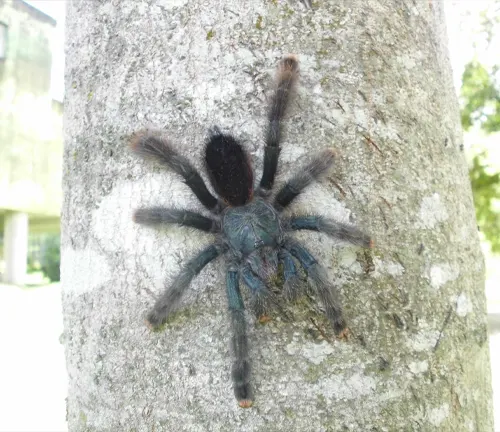
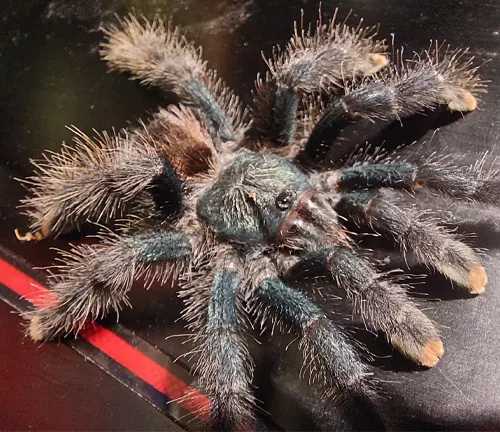
Avicularia metallica
Also referred to as the Metallic Pink Toe Tarantula, this species is known for its stunning metallic blue coloration on its body and pinkish toes. It is native to Venezuela and Brazil and is highly sought after by tarantula enthusiasts for its striking appearance.
Avicularia purpurea
The Purple Pink Toe Tarantula, as its name suggests, exhibits a purple hue on its body, making it a unique and visually appealing species. It is native to Ecuador and Peru and is prized for its beautiful coloration.

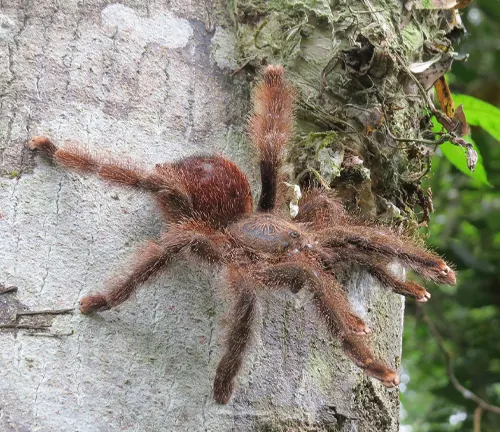
Avicularia huriana
This species, commonly known as the Ecuadorian Pink Toe Tarantula, is native to Ecuador and Colombia. It has a more subdued coloration compared to other Pink Toe Tarantulas, with shades of brown and pink on its toes.
Avicularia versicolor
The Antilles Pink Toe Tarantula, also known as the Martinique Red Tree Spider, is native to the Caribbean islands of Martinique and Guadeloupe. It is distinguished by its vibrant blue and green coloration as a juvenile, which gradually transitions to shades of pink and purple as it matures.
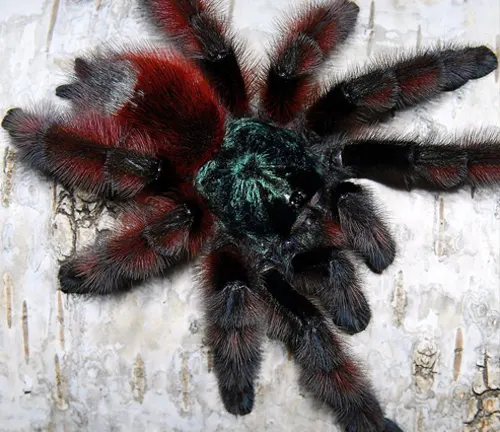
Frequently Asked Question (FAQs)
- Are Pink Toe Tarantulas venomous?
Yes, Pink Toe Tarantulas possess venom, but it is relatively mild and not considered dangerous to humans. Their venom is primarily used to immobilize prey rather than for defense. - How big do Pink Toe Tarantulas get?
Adult Pink Toe Tarantulas typically have a leg span of around 5 to 6 inches, although this can vary depending on the species and individual. - What do Pink Toe Tarantulas eat?
Pink Toe Tarantulas are carnivorous and primarily feed on insects like crickets, roaches, and other small arthropods. They may also occasionally consume small vertebrates like lizards or small rodents in the wild. - Do Pink Toe Tarantulas require special humidity levels?
Yes, Pink Toe Tarantulas prefer a moderately humid environment, especially since they are arboreal species. It’s essential to maintain appropriate humidity levels in their enclosure to ensure their well-being and proper molting. - Can Pink Toe Tarantulas be handled?
While Pink Toe Tarantulas can be handled, it’s essential to do so with care and caution. They are delicate creatures, and mishandling can result in injury or stress. Additionally, their urticating hairs can cause irritation if they come into contact with the skin or eyes. - How often do Pink Toe Tarantulas molt?
Pink Toe Tarantulas molt periodically as they grow, shedding their exoskeleton to accommodate their increasing size. The frequency of molting can vary depending on factors such as age, diet, and environmental conditions. - Are Pink Toe Tarantulas aggressive?
Pink Toe Tarantulas are generally docile and shy, preferring to retreat rather than confront threats. However, like all tarantulas, they may exhibit defensive behaviors if they feel threatened or cornered. - Can Pink Toe Tarantulas be kept in groups?
While Pink Toe Tarantulas can tolerate communal living to some extent, it’s generally safer to keep them individually to prevent aggression and stress. Introducing multiple individuals into the same enclosure can lead to territorial disputes and potential injuries. - What should I do if my Pink Toe Tarantula stops eating?
Periodic fasting is normal for tarantulas, but if your Pink Toe Tarantula refuses food for an extended period or shows other signs of illness, it’s essential to monitor its behavior closely and consult a veterinarian with experience in exotic pets if necessary. - Are Pink Toe Tarantulas suitable pets for beginners?
Pink Toe Tarantulas can make fascinating pets for enthusiasts willing to commit to their care requirements. However, they may not be suitable for beginners due to their specific needs and the potential challenges associated with their care.




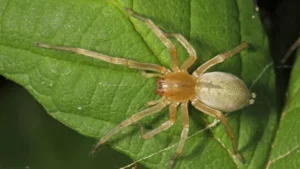
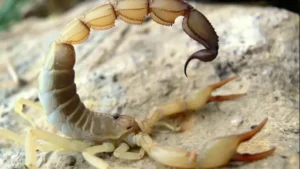
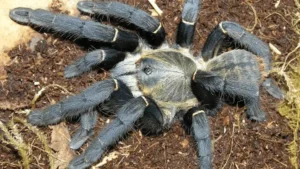



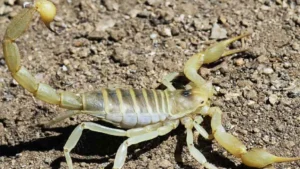



Leave your comment